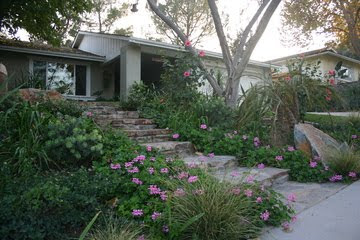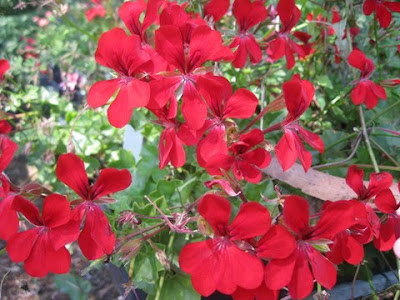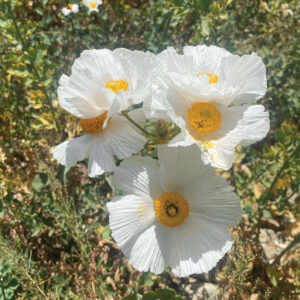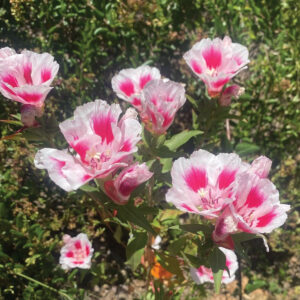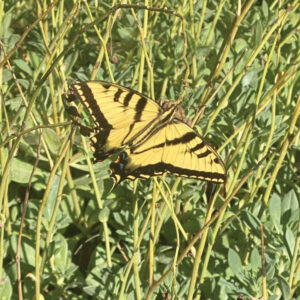I am very lucky to buy many of my perennials from Greenwood Day Lily Gardens in Somis, CA. and to have access to the knowledge of John Schoustra the owner of Greenwood. John is an authority not only on Day Lily and Iris plants but Geraniums and Pelargoniums as well. Since both Geraniums and Pelargoniums are excellent plants for Southern California I think it is important for me to include information on this blog. Here is the scoop from John Schoustra – Thank you John!
Geraniums and Pelargoniums… Which is which? The botany can be a bit mind numbing, but basically geraniums are generally from northern climates, often requiring a winter chill (vernalization) and acid soil to thrive. Pelargoniums are generally from Mediterranean climates like South Africa and are usually drought tolerant, but damaged by frost. Both genera are part of the geranium family (Geraniaceae).
Geranium maderense: Usually a biennial, geranium maderense thrives in a tough combination of dry shade and crowded tree roots better than almost any other option. While vegetative, geranium maderense resembles a large (18”-28” W x 24”-36” H) mounding begonia with dissected foliage. During the 3-7 month flower display, it looks more like a sturdy, broad delphinium with hundreds of lavender-magenta blooms. Self seeds readily.
The Pelargonium genus varies greatly and we grow fewer than 500 of the many thousands of varieties in existence. Those that we do grow share a number of care requirements for success in the garden.
Living Soil for Long Life – Most pelargoniums are sold as annuals (disposable plants) and the peat/perlite mixes they are grown in ensure a short life in the ground. Our own heavier compost based mix is more compatible with garden soils, providing a slower growing, but healthier and longer lived plant.
Warm Days, Cool Nights – These plants need the Pacific Ocean influenced climate. Malibu, Pasadena, Concord and San Jose are fine. Phoenix, Chicago and New Orleans are not.
Avoid Soggy Soil, Wet Foliage – When in doubt, water established pelargoniums in the garden less, not more. Once per week should be plenty. Overhead irrigation is good, but avoid watering late in the day or at night.
Cut Back 75% Every Year – The ancestors of our plants inhabited areas of South Africa similar to our chaparral, filling the role of salvias, etc. If controlled burns intimidate you, cut back the foliage by 75% every year, sometime between Thanksgiving and Super Bowl. Depending on the situation, we use pruning shears, hedge trimmers, a weedeater or even a machete. Without the pruning, new growth will initiate from the end of the previous years, leading eventually to woody sprawl and declining vigor.
Small Plants Adapt Best – After years of experimentation, we have decided to grow most of our pelargoniums in deep (nearly twice as deep as most 4-inch) 4-inch pots in compost-based soil that we produce. The difference between our 4-inch grown and a one-gallon is a few weeks of growth, but the 4-inch grown plants live longer and have fewer problems in the landscape.
Julie’s note: John has an amazing nursery, check out his website for mail order (and to drool over) and put him on your “to do list” for a visit in the spring when he opens his nursery to retail on a few weekends. He has beautiful day lily and iris plants as well as a wonderful selection of Pelargoniums and his Geranium maderense are amazing! Once you use them in your landscape… you will want more.
For more about my designs: thegrassisalwaysgreener

